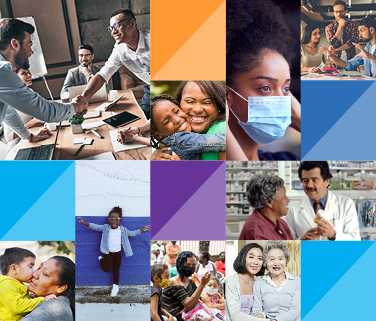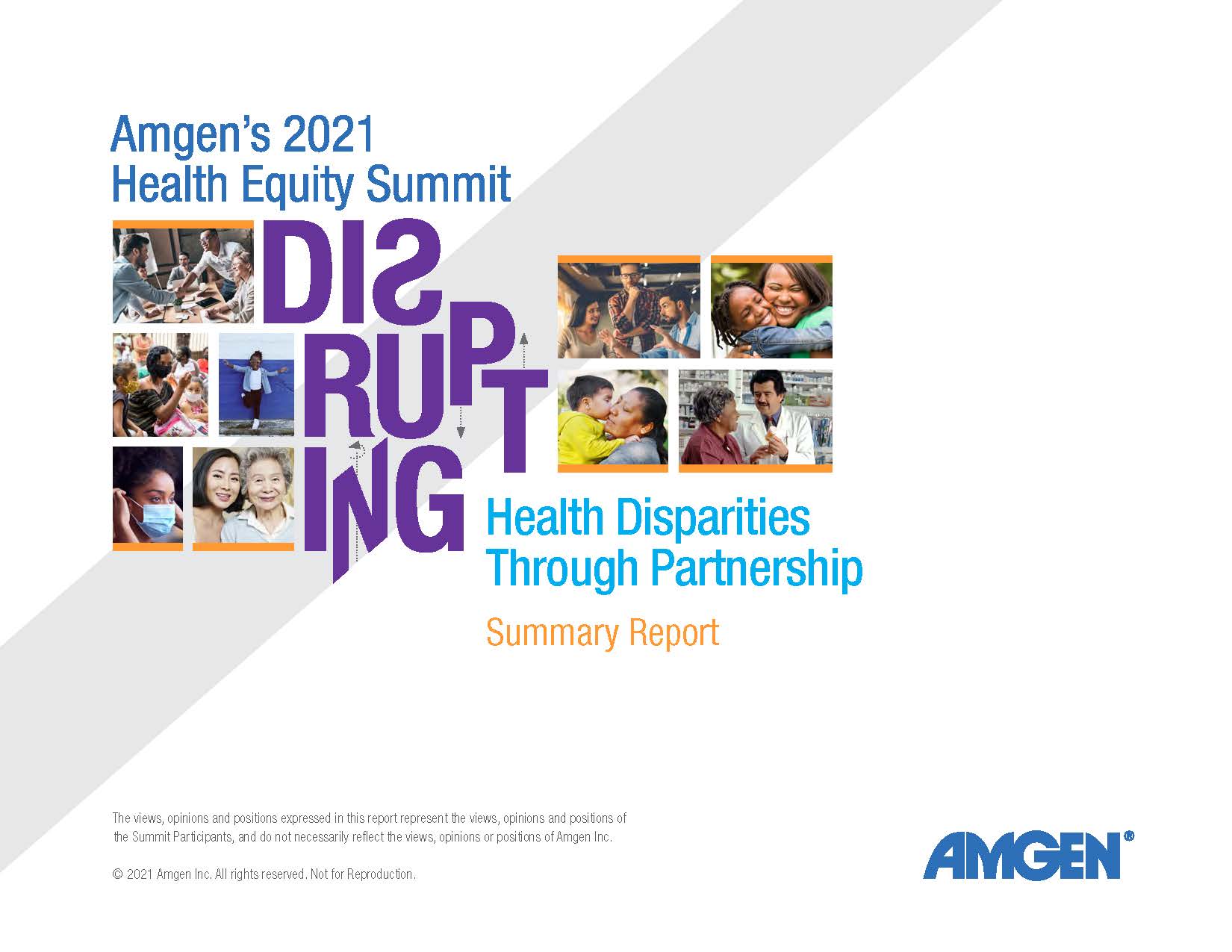This article was updated on June 21, 2021 with the addition of the executive summary of the event’s key takeaways as well as a special podcast follow-up for the Health Equity Summit event:
Last week, Amgen hosted its 8th annual Health Equity Summit, and this year's event took on added weight with the recent verdict in the Derek Chauvin trial, and the high rates of COVID-19 infection among communities of color.
“Clearly what happened last year was a catalyst,” said Amgen CEO Bob Bradway in the opening panel discussion, referring to the incidents surrounding the murder of George Floyd and others, and how the pandemic has disproportionately affected communities of color. “It’s been this way for a long time and we’re going to make progress, but we’re going to have to do that together and we’re going to have to recognize that it’s one step at a time. We may get discouraged, we may get excited, whichever it is, we just have to keep moving forward one foot in front of the other.”
The event brought together a wide range of voices to discuss issues around racial equity in healthcare, including Amgen executives, U.S. congresspeople, and disruptive leaders in patient advocacy, social determinants of health and healthcare technology. The summit also featured an emotional fireside chat with Judy Brown, Amgen’s senior vice president of Corporate Affairs, speaking with NFL cornerback Johnathan Joseph about how losing his father to cancer inspired him to become an advocate for empowering communities of color around their health.
Here’s a look at five takeaways from this year's summit:
COVID-19 has brought years-old health equity issues to the forefront
Raul Ruiz, MD, and U.S. Representative for California's 36th congressional district, kicked off the summit by speaking about the impacts of the pandemic on minority communities. “The coronavirus pandemic has disproportionately devastated communities of color, magnifying the inequities in our system,” he said. “We see disparities with Latinos, African Americans, Native Americans and high-risk essential workers bearing a disproportionate burden of infections, hospitalizations and deaths from COVID-19."
But the pandemic didn’t create these challenges, instead it magnified long-standing health inequities like access to care issues among minority communities, and the lack of diversity in clinical trials, especially among Black Americans, who have long been underrepresented in clinical research.
“The pandemic has really highlighted the urgency of addressing representation in clinical trials,” said Ponda Motsepe-Ditshego, MD, global executive medical platform lead, Bone & Nephrology at Amgen and global chair of the Amgen Black Employee Network, which spearheaded an initiative called Representation in Clinical Research (RISE) in October 2020. “COVID-19 also brought various issues that hamper diversity in clinical trials to the fore, such as issues of mistrust, challenges of economics as well as geography, fear and insufficient outreach.”
Social care, and dignity, sit at the heart of health equity
Focusing on medical care won’t move the needle on health equity. There also needs to be a significant shift in how institutions think about social care, which includes everything from patient support systems and cultural and language considerations to the accessibility of transportation to doctor's appointments and fundamental needs like housing and nutritious food.
“No conversation about health equity can be complete without talking about food,” explained Doug Rauch, the former president of Trader Joe’s and now founder and president of Daily Table, a non-profit organization that helps provide people fresh produce and nutritious foods at prices that every budget can afford. “Good health starts with good nutrition.”
However, Rauch also added that social care services need to be offered in ways that empower people with dignity, as many individuals in need choose not to use services they considered charity. Models that enable dignity can encourage people to use the services and increase access to important health practices.
Community-based services form the foundation
The future of healthcare must include a much broader vision of what care means, one that includes public-private partnerships to advance a full range of community services—everything from housing and employment assistance to mental health care—because the people who experience the greatest health disparities are often the ones who don’t have regular contact with healthcare providers.
“Where do people access the basic necessities of life every day? It is not in the doctor’s office or the hospital. It’s in the communities where they live,” said Daniel Brillman, cofounder and CEO of Unite Us, an outcome-focused technology company that builds coordinated care networks of health and social service providers. “And it’s the organizations in the community that should be the access points."
Technology is a tool, and a challenge, in addressing health disparities
The COVID-19 pandemic saw a big surge in the use of technologies like telemedicine for healthcare. Susan Sweeney, Amgen’s senior vice president, Global Marketing, Access and Capabilities, explained that advances in technology offer great potential to improve access to care but they also present challenges as some people may lack broadband internet access or familiarity with the digital tools to connect with their doctors remotely.
René Quashie, vice president, Policy and Regulatory Affairs, Digital Health, Consumer Technology Association added that the pandemic led to an incredible surge in the use of telemedicine and remote patient monitoring, and that the widespread adoption of smartphones, even among low-income Americans, offers a path to improving access. “The latest data shows that 70 percent of people making $30K a year or less have smartphones,” he said. “We have ways of reaching these people. The question is, how do we do it?”
Taking a patient-centric, culturally sensitive approach to care
The current model of healthcare often fails to distinguish between the cultural or social-economic needs of different patients, which can lead to disparities. In a fireside chat, NFL cornerback Johnathan Joseph spoke about his father’s losing battle with lung cancer, and about the cultural considerations that can help African Americans access care that could lead to earlier diagnoses of diseases like cancer.
“There’s a lot of common barriers out there among the African American community, whether it’s mistrust, not having the right knowledge or being educated about the situation, or just having the right people to give you the support system,” Joseph said. “My father just happened to have another health situation and the doctor suggested he get tested because something didn’t look right. Without that doctor visit, you don’t know how long it would have gone undetected."
To learn more about Amgen’s 8th Annual Health Equity Summit, watch the full event below.






